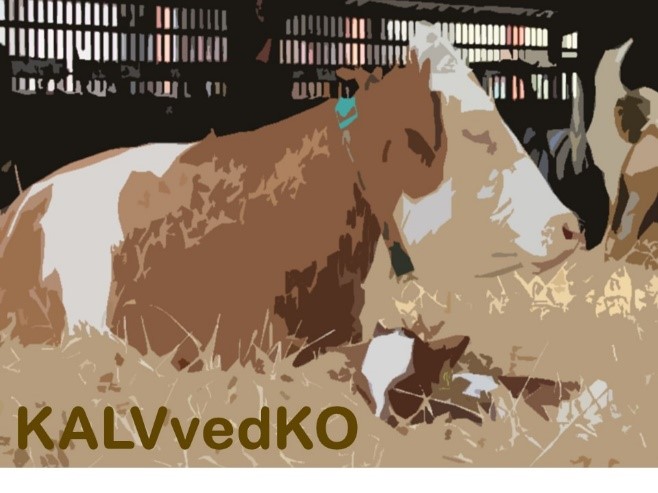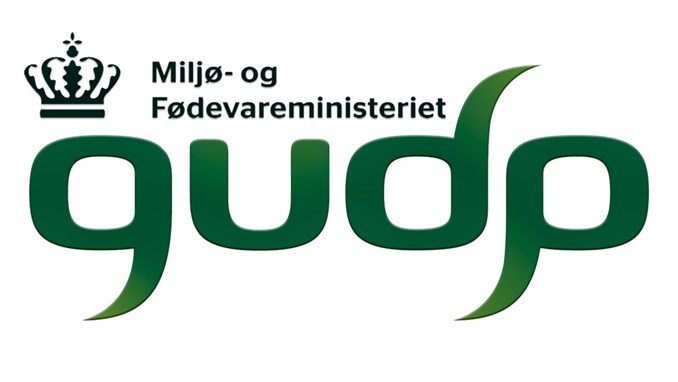Research and common learning about cow-calf contact systems in dairy herds
Cow-calf contact in dairy herds is subject to research from many angles, and the so-called Stable Schools is one of them. Here, farmers who want to develop cow-calf contact systems on their farms, can learn together and develop ways to keep calves together with cows. Being part of a research project, this approach can contribute to formulating relevant research questions, and give knowledge about important practice-perspectives of these systems.
By: Mette Vaarst (AU) and Iben Alber Christiansen (Organic Denmark)
The fact that calves are separated from their mothers after 24 hrs., is an obvious dilemma in organic dairy herds although it has been commonly accepted practice through many decades with reference to the need for milk for human consumption. The project ‘Cow’n’Calf’ with partners from AU, Thise Dairy Company, Naturemilk, TruTest and Organic Denmark (OD), explores ways of solving this dilemma through research and development of robust housing systems, which can work under Danish conditions. A part of this project is the conduct of so-called ‘Stable Schools’. The project bridges to the international CORE Organic Cofund project GrazyDaiSy, which include the partners AU, Organic Denmark and Them Dairy Company) som i Danmark inddrager partnerne AU, ØL og Them Mejeri, and which focuses particularly on grazing systems also for cows and calves.
What is ’Stable Schools’?
Stable Schools are groups of farmers who meets regularly on the group members’ farms with the aim to help each other to reach a common goal – such as in this case to make cow-calf contact systems work in dairy herds. The work in the way that the ‘host farmer’ for each meeting has made an agenda in collaboration with the facilitator. This agenda includes one ‘success story’ and two ‘problem focus areas’, to which they want to have their colleagues’ suggestions to, and the meeting on this host farm is centered around these points. In this way, the participants use each other, and base their advice on their experience and broad general understanding of how the farming systems are organized, including each farmer’s particular goals.
Stable Schools as a part of the project
In the project Cow’n’Calf, one Stable School started in April 2019 with participants from five farms plus a couple of farmers who for different reasons left the group along the way. The group met approx. every 1½ month except from holidays and busy periods, altogether 9 times (closed down since mid-March due to Covid19). Topics like milk-lay-down, suckler aunts, organization of housing systems, calf supplementary feeding and not least different weaning methods and –timings have been on the agenda. The farmers have shared successes and failures with each other when they met. The experience which they build up at home in their herd have contributed to learnings for everybody, and the participants have changed methods and working routines. Sometimes, new persons entered in the group, e.g. following a shift of staff members on a farm. This has presented both advantages and challenges: new angles to the issues were represented, but it is also important to build trust among an established group of people, to feel free to be honest e.g. about the challenges connected to a certain farm. Another challenge has been the geographical constraints, because of the distance between farms: much time has been spent travelling between regions of the country. At the same time, this travel time gave opportunities for driving together and having good discussions on the way.
The group has included farms of widely different types; most herd had up to 100 cows, but there were also farms with 350-400 cows. Obviously, other extra aspects and challenges are present in larger herds, and more focus were needed to scale up and down in different systems and understand the differences in logistic challenges regarding the ways in which housing systems were organized.
Stable Schools as way of developing something – together!
At times, a big challenge for the participants in this Stable School with focus on cow-calf contact systems was that these types of systems were new for most of the participants, so they shared a need of knowing more and having experience. At the same time, it was clear for everybody that there was no ‘one model’, which was the best, but many different ways of doing things. This common conclusion helped a lot when trying to organise things: it is important to find inspiration, but being conscious about the fact that everybody needs to develop something rather than copy existing systems, to make it fit to the systems at home.
In 2020, the plan is to enlarge the Stable School and include more participants, who may not have been started completely yet, but consider how things can best be organised in their farm. In this way, it may be possible for the new participants to be inspired by more experienced, and hopefully find courage to try it out in ways which fit to the existing framework at the farm, and learn together from the range of different ways of doing things. Apart from this, the Stable Schools gives a constant ‘platform’ to ask for help for those who are trying new things. The experience from the meetings so far show that bigger herds need more considerations and time to organise, especially regarding housing systems and investments. A major difference between ‘larger’ and ‘smaller’ herds was also observed with regard to the fact that more people are involved in larger herds, which requires good collaborations between farm owner and staff members, and more fixed routines and systems from the beginning seemed needed, when more people are involved.
How can Stable Schools be an important part of a research project?
This research team are also working in the international sister-project, GrazyDaiSy, which has an aim of describing ’change and transition’ to new routines, among others with focus on change to cow calf contact systems. If researchers should produce useful knowledge, which should be used by farmers and in agriculture, research in change and transitions is absolutely necessary, both with regards climate, food systems and ecosystems. By combining practice development with research, like here where we work in Stable Schools and conduct interviews about experiences in cow calf contact systems, we get our eyes opened to which practical problems and challenges need solutions when developing such systems, and as a researcher team we become better equipped to develop questions, projects and answers which are relevant in and for practice. Apart from that, we learn something important which contribute to general knowledge about ’change and transition’ at a more overall level, which can be important for the development of future farming.
Development of cow-calf systems in Danish dairy herds
Hopefully, we will develop robust and well-qualified theoretically and practically founded knowledge and guidance to how systems can be established which allow cow calf contact for weeks or months after calving. Both the mentioned projects, which ICROFS are involved in through CORE Organic Cofund and OrganicRDD4, conduct ethological studies which contribute to knowledge especially regarding the calf’s behaviour and welfare in such systems. We work with colleagues and institutions across Europe, and we have ambitions to continue to involve experiences and common development as part of the projects, and reach out through common events (after the Covid19 crisis), as well as ‘idea catalogues’, case studies, economic calculations and sustainability analyses.

Acknowledgements
The Stable Schools are part of the OrganicRDD4 project KALVvedKO (Cow’n’Calf; 34009-18-1387) which is coordinated by ICROFS and funded by Grønt Udviklings- og Demonstrationsprogram (GUDP) under the Ministry of Food and Environment.
The sister project, GrazyDaiSy (H2020 Eranet CORE Organic Cofund projekt 727495) is supported from transnational financing bodies, with cofinancing from EU, and funds from the Innovationsfund for the Danish part).

